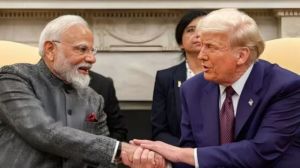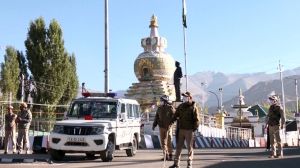India to advance zero-tariff SAFTA date
In its efforts to reach out to smaller neighbours, India has decided to propose a zero tariff regime on positive list for the least developed countries of the bloc under the South Asian Free Trade Area Agreement by 2008.

In its efforts to reach out to smaller neighbours, India has decided to propose a zero tariff regime on positive list for the least developed countries of the bloc under the South Asian Free Trade Area Agreement (SAFTA) by 2008.
India will also slash import duty on the negative list from 45 per cent to 10 per cent. The move is expected to be announced by Prime Minister Manmohan Singh at the 14th SAARC summit beginning April 3.
It is in line with the Prime Minister’s broader vision of making smaller neighbours greater stakeholders in the free trade regime.
According to sources, India will propose zero tariff on the positive list to the least developed countries in SAARC— Bangladesh, Bhutan, Maldives and Nepal— by 2008.
Under SAFTA, that came into effect on January 1, 2006, the zero tariff regime was to be in place in a phased manner, with India and Pakistan implementing it in 2009, Sri Lanka in 2010 and the others by 2013. In another gesture of walking the extra mile, India is expected to allow export of 8 million pieces of textiles from Sri Lanka and Bangladesh with a part-restricted import regime. According to sources, this move assumes significance considering among the 800-odd textile items, more than half are in the negative list where tariff concessions cannot be extended, as it would hurt the interest of the domestic textile and clothing industries.
“With India keeping garments in the negative list, Bangladesh with a competitive low-cost garment industry feels let down as it cannot trade garments into the vast Indian market on a preferential basis,” sources explained.
According to officials, the initiatives taken by India—the biggest country and economy in the SAARC bloc—to help the lesser developed countries will also improve the “intra regional trade amongst SAARC countries.”
The intra-regional trade among SAARC countries is 5 per cent, while in EU it is 63 percent and in ASEAN 38 per cent.
Meanwhile, Foreign Secretary Shiv Shankar Menon today said the issue of reducing the telecom tariff in the region was taken up at the standing committee meeting. The meeting will continue tomorrow. He said though the tariff had gone down within the country, the tariff within the region was still high. The issue of terrorism was raised at the standing committee by Sri Lanka in the backdrop of the escalation of violence in the country. The discussions today focused on taking SAARC from a declaratory stage to an implementation level, Menon said.





- 01
- 02
- 03
- 04
- 05


























